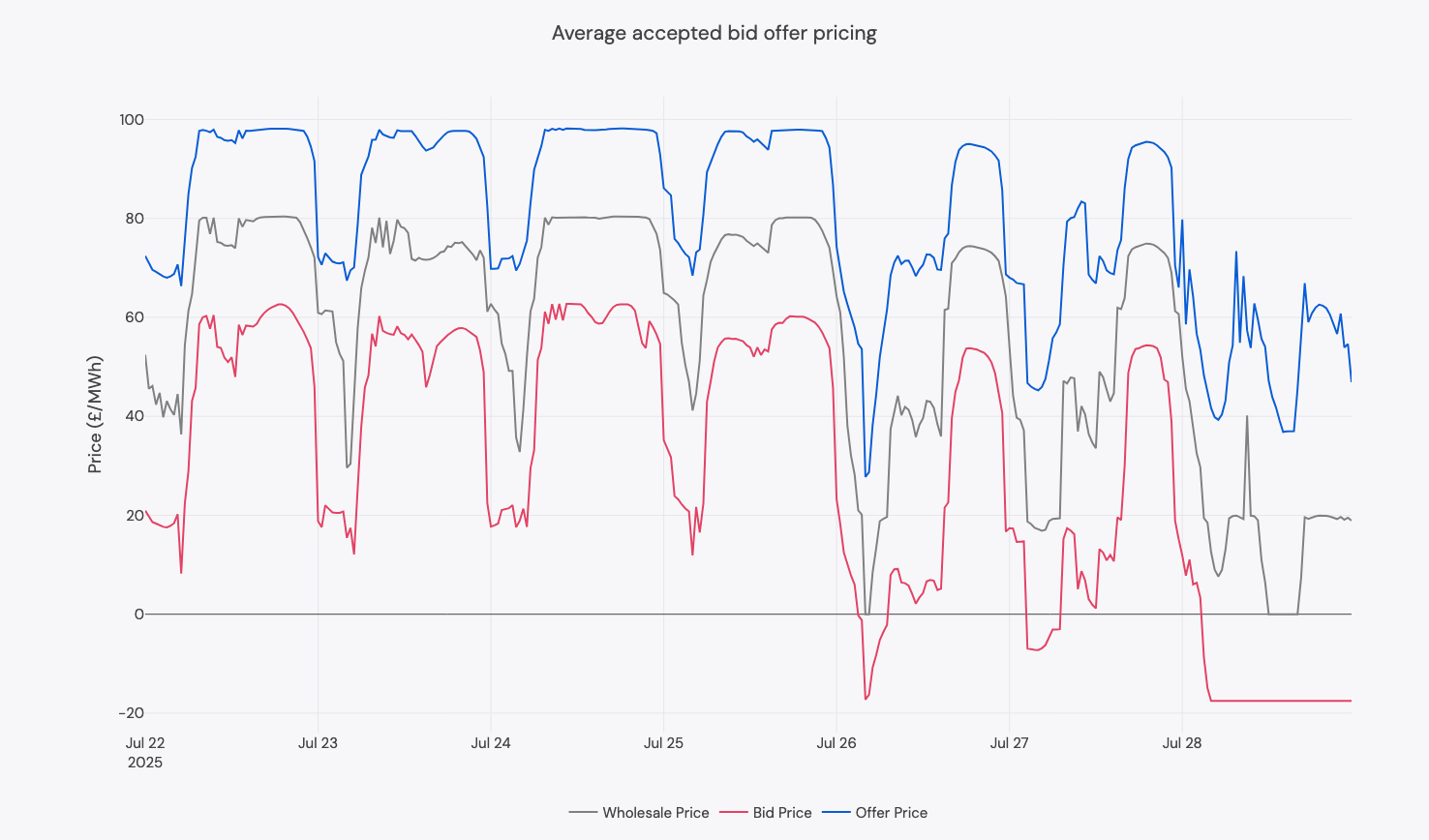BM revenues for batteries
Taking supply and demand, current dispatch rates & future transmission build out of wires and wind, competition amongst dispatchable assets, and BESS day-ahead positions, we model revenues
- By varying demand with the forecast supply stack, we get bid and offer pricing for each half-hour to 2050. These models the volume weighted average accepted bid price and volume weighted average accepted offer price for each settlement period.
- In the near-term, dispatch rates for batteries are based on our historic analysis by Grid Supply Point (GSP) group or Distribution Network Operator (DNO).
- In the longer-term, the Open Balancing Platform (OBP) should increase dispatch rates and allow batteries to be utilised for system-flagged actions. We therefore use the Electricity Ten Year Statement and our wind forecast to calculate expected constraint levels for each boundary on a half-hourly basis, and this is used to predict the balancing actions needed to address each constraint. This is combined with a forecast of energy actions needed, before competition between assets is then factored in to calculate a dispatch rate for any given location.
- Improvements due to the OBP are expected to be gradual. Fast Dispatch, Balancing Reserve, Constraint Management, and New Storage Parameters should all help to increase dispatch rates, but we believe it's the combination of all of these as well as time that will allow dispatch rates to increase more quickly. As such, we expect dispatch rate improvements to be slow initially, with this rate of improvement increasing towards the completion of OBP at the start of 2027.

- Site-specific availabilities for dispatches in the balancing mechanism are calculated based on day-ahead traded positions as per our battery dispatch model.
- Batteries can use the balancing mechanism to generate additional revenues through additional cycling up to the maximum cycles selected for each model run. After this point, the battery can continue to make additional revenues by re-positioning existing wholesale positions into the balancing mechanism.
Modelling accepted Bid Offer pricing using the fundamentals supply stack
We vary demand and rerun our fundamental price model to get a bid, and an offer price per half-hour period. These represent volume weighted average accepted bid and offer prices for each settlement period. We also assume a minimum spread between the offer and bid price (£35/MWh). This spread is informed by historic data.

Availability for BM dispatch
Given the day-ahead position (charge and discharge profile), we calculate the availability to change power output:
- The headroom, ie, the increase in power a system can charge at, and the amount of energy available to charge the battery, dictates the availability for bids
- The footroom, ie. the decrease in power a system can discharge at, and the amount of energy available to discharge the battery, dictates the availability for offers.
Availability is multiplied by dispatch rates to calculate maximum bid and offer volumes
Modo Energy analysis shows dispatch rates for battery storage in GB are around 7%, and vary by location. The Open Balancing Platform (OBP) programme of works will improve systems in the control room between its launch in December 2023 and when it is fully operational by the end of 2027.
As a result, dispatch rates for batteries should improve over time, and should be significantly higher by the end of 2027. Batteries will also start to be used more for system-balancing actions, and this will lead to large locational differences in dispatch rates based on where the battery is. Some boundaries in the transmission wires cause more significant constraints, and there will be competition amongst assets for getting bids and offers within in a region.
Updated about 2 months ago